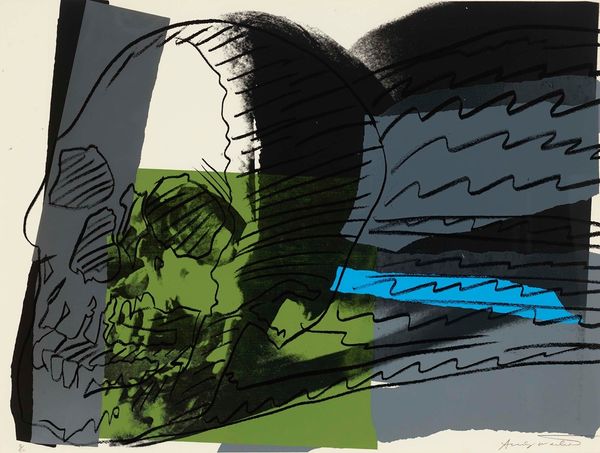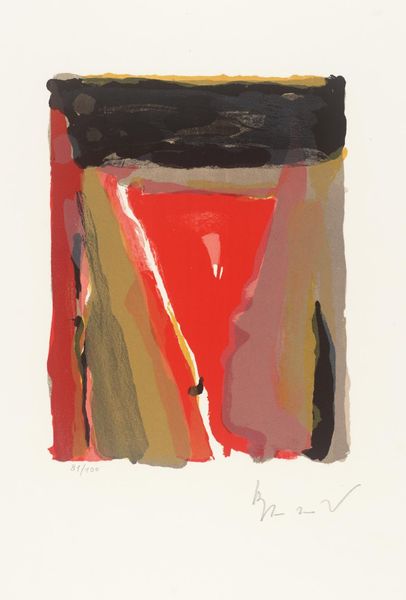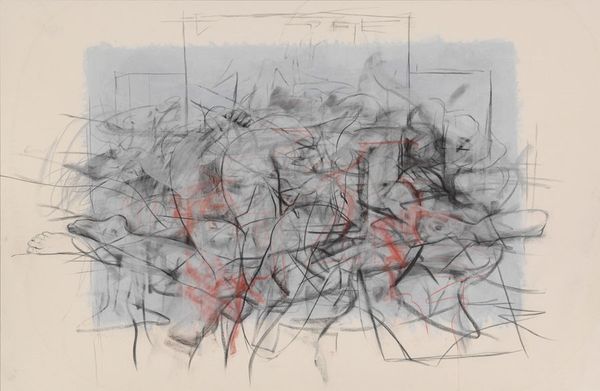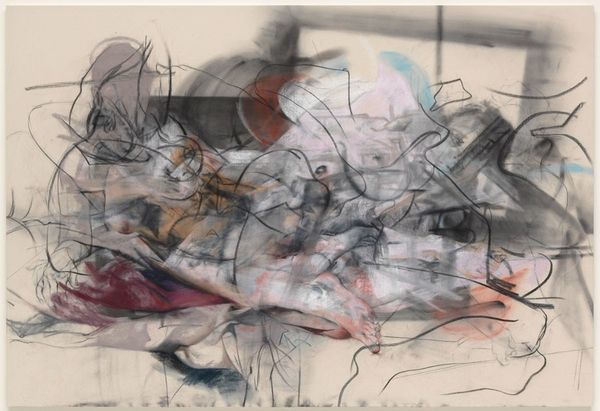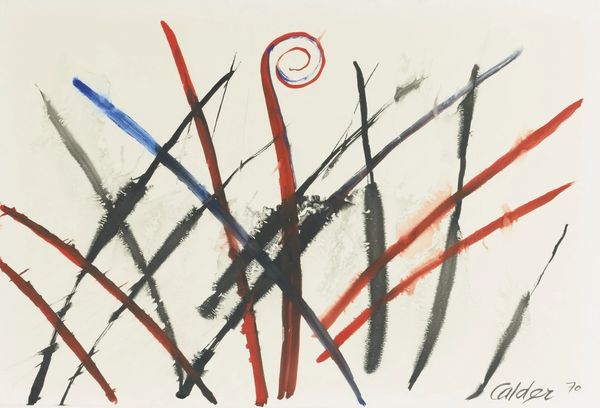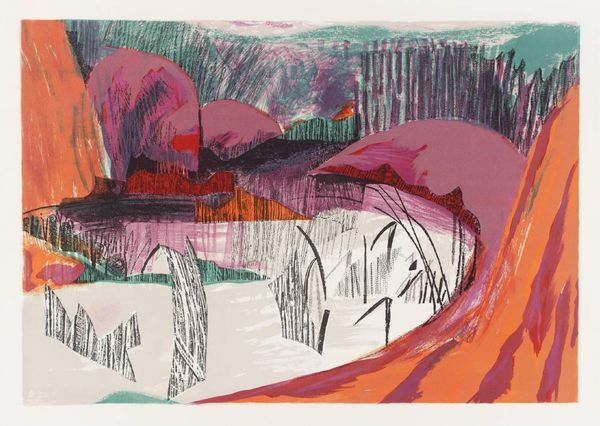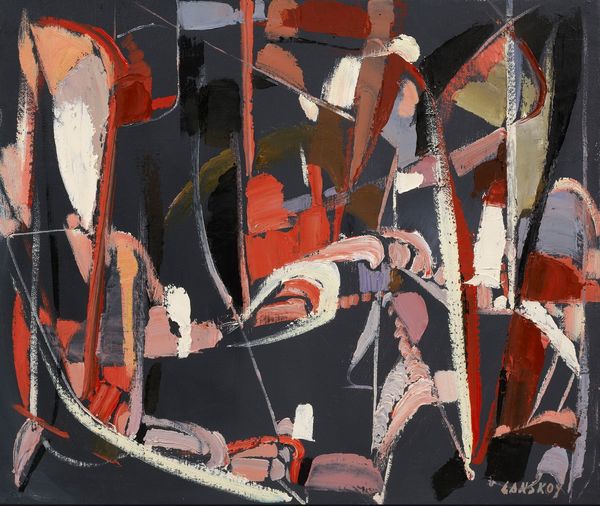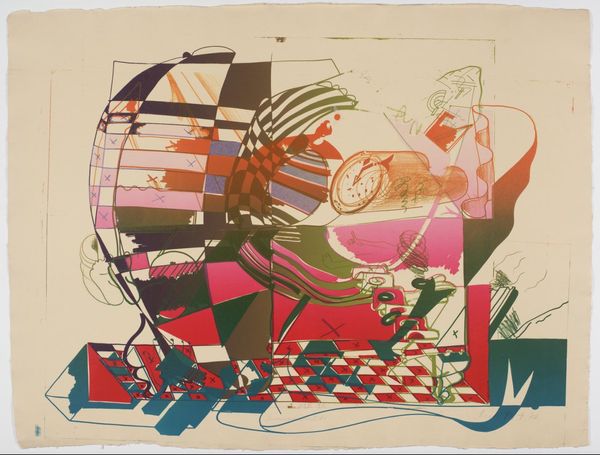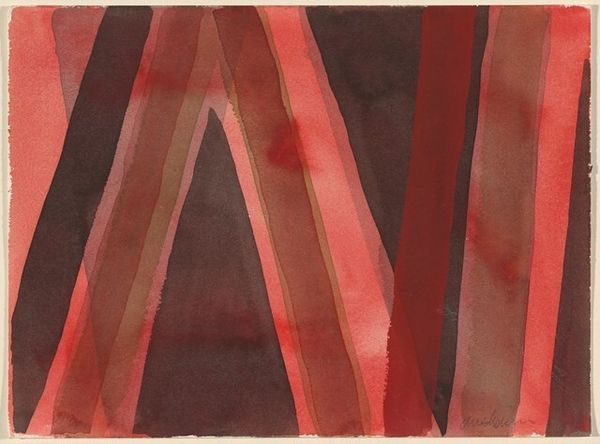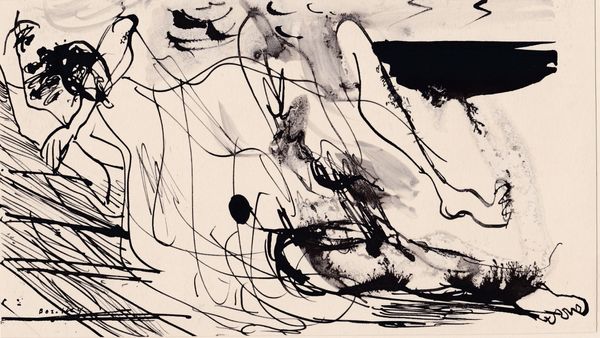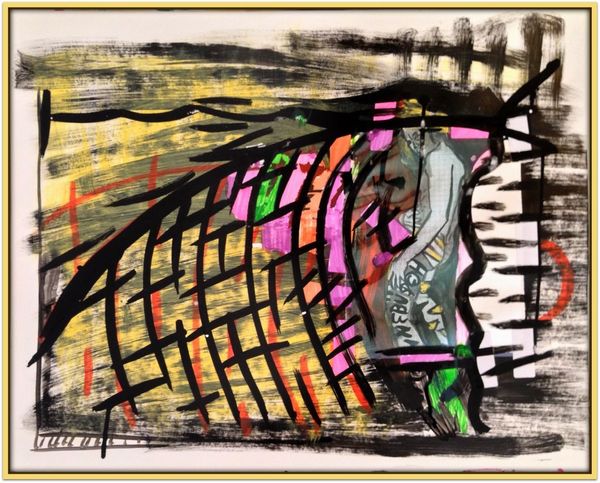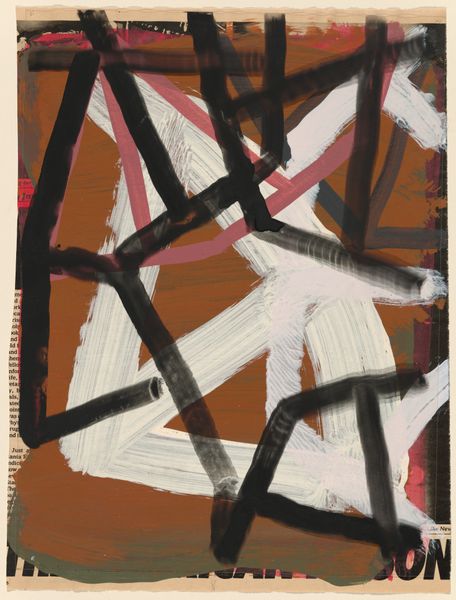
Copyright: Modern Artists: Artvee
Curator: Immediately striking. The boldness, almost a raw power, coming through. I feel as if this silkscreen is ready to burst from the surface with energy. What do you see? Editor: This is "Hammer and Sickle 1" by Andy Warhol, created in 1977. It’s fascinating to see such potent symbolism rendered through his iconic Pop Art lens. It definitely throws a wrench in our traditional understanding of both art and political ideology. Curator: A wrench, an hammer perhaps? Looking at it as a symbol, the hammer and sickle—originally meant to represent the industrial worker and the peasant farmer, united in purpose. But through Warhol’s interpretation, does it transform? Editor: Absolutely. The abstraction here mutes the overt political message. Warhol's blurring suggests the way symbols can become detached, commodified even. Note the flattening of depth; he neutralizes the revolutionary fervor. It's less about championing a cause and more about exploring the image itself, deconstructing its iconic status. The way that he has overlapped and misregistered colours. Is he pointing at how Soviet promise had 'slipped'? Curator: Intriguing how it echoes the Russian avant-garde, like Malevich’s Suprematism. Those artists sought to express spiritual feeling through pure geometric form. In that sense, Warhol adopts that pursuit, to use simple, almost primal shapes. What sort of feelings did that image evoked? The idea of labour in its simplistic beauty? Or the promise of industrial advancement at the time. The future! Editor: The colors, those vibrant reds and oranges, practically scream. It feels almost jarring in its directness. A bit unsettling too, given the layered history that lives inside this particular combination of shapes. You can't escape its connotations. Even filtered through Warhol, that collective weight it brings refuses to be completely erased. Curator: Precisely, we encounter this continuous play of visibility and concealment. Symbols inevitably reveal themselves, embedded in collective consciousness through propaganda, newsprint, and protest banners, remaining persistent visual components. A bit like today, in fact! Editor: Yeah, that’s the magic, and the terror of symbolism: forever mutable and permanently fixed all at once! Makes you wonder what symbols of our era will find their way onto canvases decades from now.
Comments
No comments
Be the first to comment and join the conversation on the ultimate creative platform.
